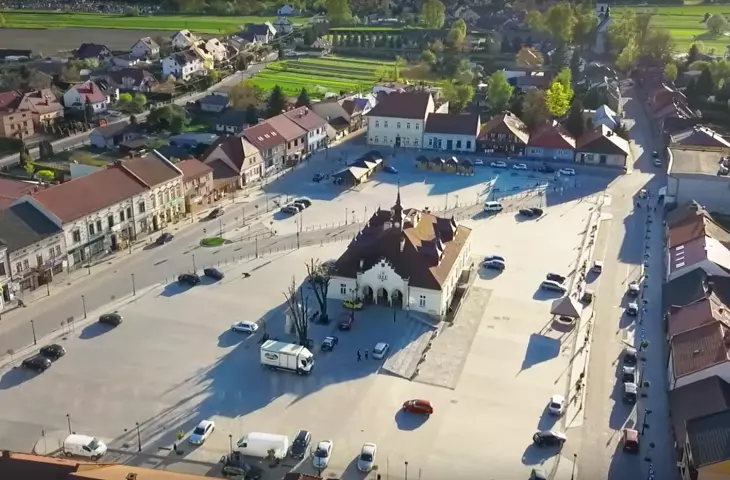The term concretosis has already become a permanent fixture in discussions, not just industry discussions. Public observation of the problem has been followed by many grassroots and political declarations about combating the desertification phenomenon. Despite this, we still find ourselves in Poland with more "revitalizations" turning markets and squares into heating pans. Lesser Poland's Zakliczyn has followed a similar path.
Zakliczyn is a small town located in the Rożnowskie Foothills. Its history dates back to the 16th century, but a good portion of its monuments are 19th-century extensions. The small market square is the center of city life - cultural, commercial and administrative institutions are located here. It was in need of reconstruction. Unfortunately, the realized proved that we still don't quite know how to deal with concretosis.
Visualization presented by Zakliczyn City Hall
© Zakliczyn City Hall
small-town specificity
Zakliczyn's market is certainly different from what we associate with markets in large cities the size of Wroclaw or Krakow. Zakliczyn's public space comes to life mainly during weekend fairs and events like harvest festivals. What distinguishes the Zakliczyn example the most from ideas about the market's function in the 21st century is the fact that a county road runs through it. Falling into degradation for several years, the condition of the pavement had to be repaired. In the process, unfortunately, there was damage to the rest of this space.
The reconstruction process began in May 2016. For many years, permits were sought, funds were sought and preparations were made for reconstruction and completion. The entire project cost more than twelve million, two-thirds of which came from external funds - primarily EU and government funds.
As part of the investment, new trees were planted - at the expense of the old ones
© Zakliczyn City Hall
The result?
In the end we received a concrete desert. On the visualization board promoted by the city, we can see rows of trees located on the outskirts of the market - the problem is that part of the existing stand of trees was replaced by thin sticks, which will be called trees in a few years.
Before the renovation, a small green square with trees, shrubs and greenery was located next to the commercial development. This was the only enclave of greenery, which even before the "revitalization" was a small percentage of the total. Despite some neglect on the infrastructural side, it was hard not to draw attention to its qualities - a place of rest and tranquility. It has now been completely eliminated in favor of concrete paving.
The greenery in the market certainly needed infrastructure improvement, but not complete elimination
© Zakliczyn City Hall
Sticks with tree seedlings embedded in the ground will continue to amuse passersby for years to come (as long as they grow in such a difficult space). The concrete pavement will only be conducive to parking cars, fixing what needs to be done and express evacuation. The same will be true for all "town-creating" events, during which life will return to the market after dark, because before that it will only threaten to exhaust the body.
Zakliczyn is not the exception, but the rule
Despite the career of the term concretosis, the anti-concrete recommendations of former General Conservator of Monuments Magdalena Gawin, and even assurances about fighting the phenomenon by Prime Minister Mateusz Morawiecki, it is still at times futile to find a change in thinking. Local government officials continue to boast with ease about reconstruction projects that are already fit for renovation when they are handed over. Trying to solve the problem of concrete in Poland remains a Gordian knot, and a change in thinking still needs to be fought for.
Love for concrete in Polish cities is still an unsolved Gordian knot
© Zakliczyn City Hall























